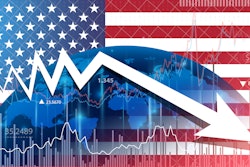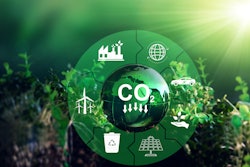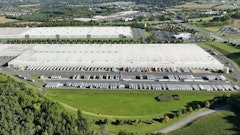
What a time to work in the supply chain industry. From port strikes and rail strikes to environmental, social, governance (ESG) regulations, electrification mandates and natural disasters shutting down major roads and ports, it’s a wonder any food and beverage moves through the cold chain.
But have no fear, it’s not all doom and gloom.
Food Logistics talks exclusively with Jena Santoro, senior manager of global risk intelligence at Everstream Analytics, about ESG compliance and reputational risks, sourcing disruptions and why supply chain leaders need to keep abreast of ESG-related legislation.
CLICK HERE to read the full article.
Food Logistics: From your perspective, what are considered the Top 5 trends to watch in 2025? And why?
Jena Santoro: I think the major themes for the food and beverage industry in 2025 will be: (1) lingering impacts from severe weather, (2) ESG reputational risks, (3) ESG compliance risks, (4) sourcing and procurement disruptions, and (5) trade protectionism. Severe weather events have been increasing in frequency and impact and have led to widespread agricultural losses in critical agri-commodities like wheat, sugar, rice, and coffee. Whether the impacts are the result of prolonged drought or major storms like hurricanes and cyclones, crop losses are typically felt well into the following season’s harvest if not beyond. The ESG category of risk is important to watch as the U.S. and the E.U. have concurrently introduced legislation to combat environmental and human rights issues in supply chains and many of the proposed changes, like the E.U. Deforestation Regulation for example, are expected to impact critical products like palm oil and cocoa. These regulations come with compliance requirements that could increase operating costs for F&B companies and run the risk of reputational disruptions if companies are unable or unwilling to adhere. Both severe weather and regulatory changes could disrupt the sourcing continuity of critical F&B inputs due to supply shortages, impacting production of end-user products. Lastly, when supply shortages complicate or disrupt sourcing efforts, countries have historically engaged in more trade protectionism to safeguard domestic supply for consumption.
Food Logistics: Describe some of the challenges impacting many of today’s supply chains. This can include everything from port/rail strikes and ESG regulations to adopting technologies and more.
Santoro: Some of the biggest challenges to supply chain continuity today have to do with logistics disruptions. We have seen major disruptions this year to shipping routes due to everything from drought impacts on the Panama Canal, geopolitical crises in the Middle East disrupting trade through the Red Sea, to labor strikes at U.S. and Canadian ports and railways. When these risks take place concurrently, as has also been the case this year, global supply chains experience an unprecedented level of chaos. Vessels blocked from transiting the Suez Canal, for example, had to absorb the added time and costs of diverting around the southern tip of Africa, while still facing an uncertain arrival at U.S. east and gulf coast ports amid looming full-scale port strikes. The main challenge to ensuring continuity of supply chains is in mitigating the scale of disruptions when alternative options are not necessarily readily available due to competing risks.
Food Logistics: Describe the State of Transportation, and how factors such as port/rail strikes, electrification, trucking wages, trucking mandates, and more will affect the State of Transportation in 2024.
Santoro: We monitor risks to logistics and transportation, such as impacts from labor strikes. As we know, the U.S. port strikes have only reached a tentative agreement on wages and contract negotiations have been extended until mid-January 2025. This means that shipping continuity through critical U.S. ports is still vulnerable to renewed labor action in the new year. Escalations in the Middle East also indicate that disruptions to shipping through the Red Sea show no signs of abating, forcing carriers to continue operating with increased costs and prolonged delivery times.
Food Logistics: The global container shipping industry continues to witness an increase in freight demand for U.S.-bound shipments. What does this mean? And what will this look like come 2025?
Santoro: This is due in large part to expectations of a U.S. economic recovery prompting a demand for containerized imports. The better the U.S. economy performs the more demand will persist into 2025. Also, the risks mentioned repeatedly throughout this document, such as geopolitical crises and labor actions, have led to delayed turnaround times for containers and that has encouraged price and demand increases for container shipments. However, there are indicators that container production is on the rise, and oversupply could cause freight rates to drop globally.
Food Logistics: Let’s talk ESG regulations. Sustainability reporting is a big thing to come in 2025. Walk us through the steps your company/your customers/your members are taking to ensure ESG compliance.
Santoro: Companies will be faced with a changing regulatory landscape that is slated to impact global supply chains broadly, but specifically the food and beverage industry when it comes to ESG-related legislation on environmental sustainability and human rights. Coming into compliance with changing regulations will be costly and may lead to operational disruptions in the interim/transitional period.
Food Logistics: How do other more global events such as the Russia/Ukraine War, hurricanes, the Red Sea attacks and more impact U.S. global supply chains? What is the outlook for 2025?
Santoro: Each of the global events mentioned in the question remain to be resolved and will perpetuate into 2025. The geopolitical events have persisted and even escalated, and severe weather events like hurricanes will continue next season as usual. The Atlantic and Gulf Coasts of the U.S. are prone to major hurricanes as we have already seen this year with Helene and Milton. These storms lead to major infrastructure damage and disrupt supply chains through power outages, road, port, and airport closures, and production halts. Geopolitical events like those mentioned impact U.S. supply chains through shipping disruptions or sourcing/procurement challenges for U.S. companies reliant on inputs or products from suppliers in affected areas. Trade restrictions like sanctions often result from these geopolitical events and make it more difficult for U.S. companies to do business with affected countries or regions, disrupting supply chains.
CLICK HERE to read the full article.
















